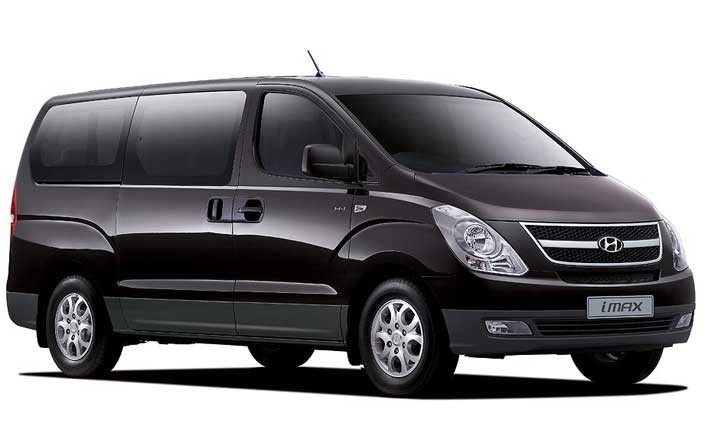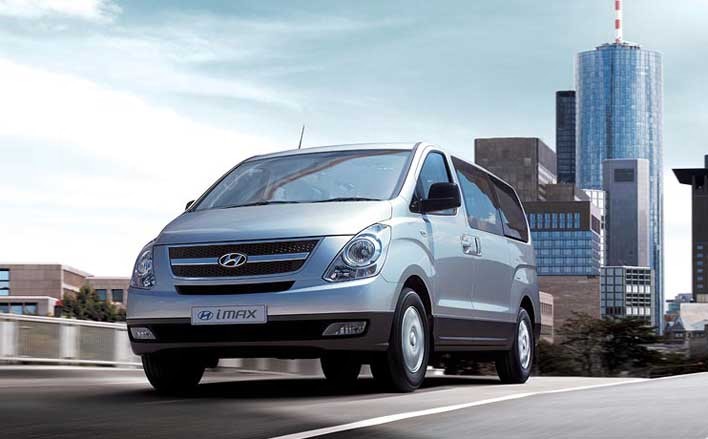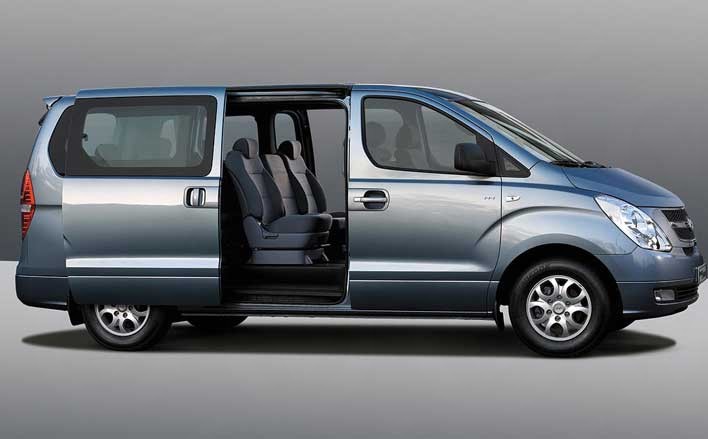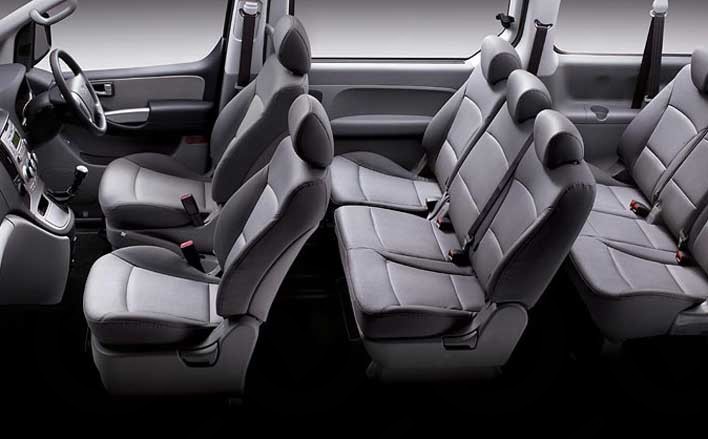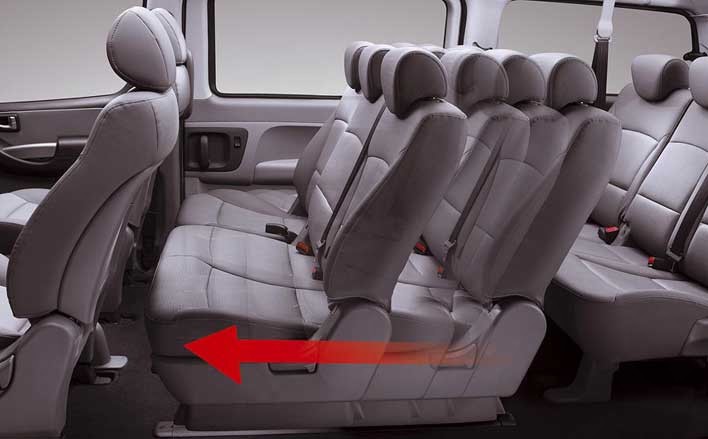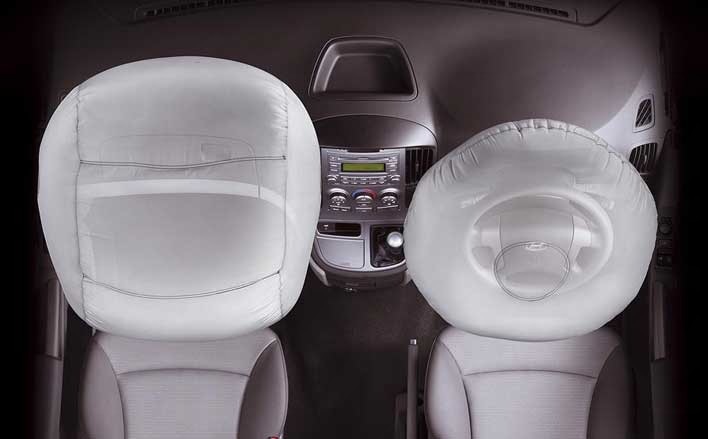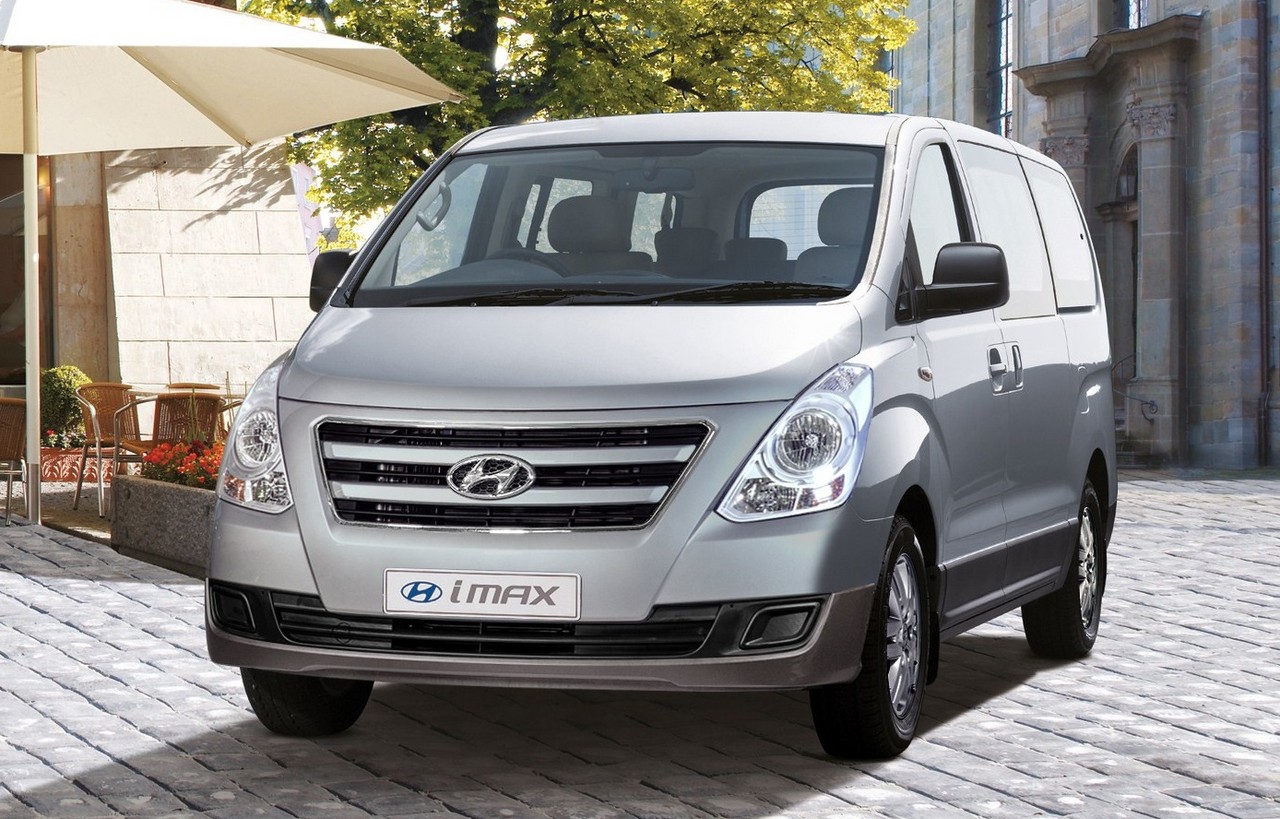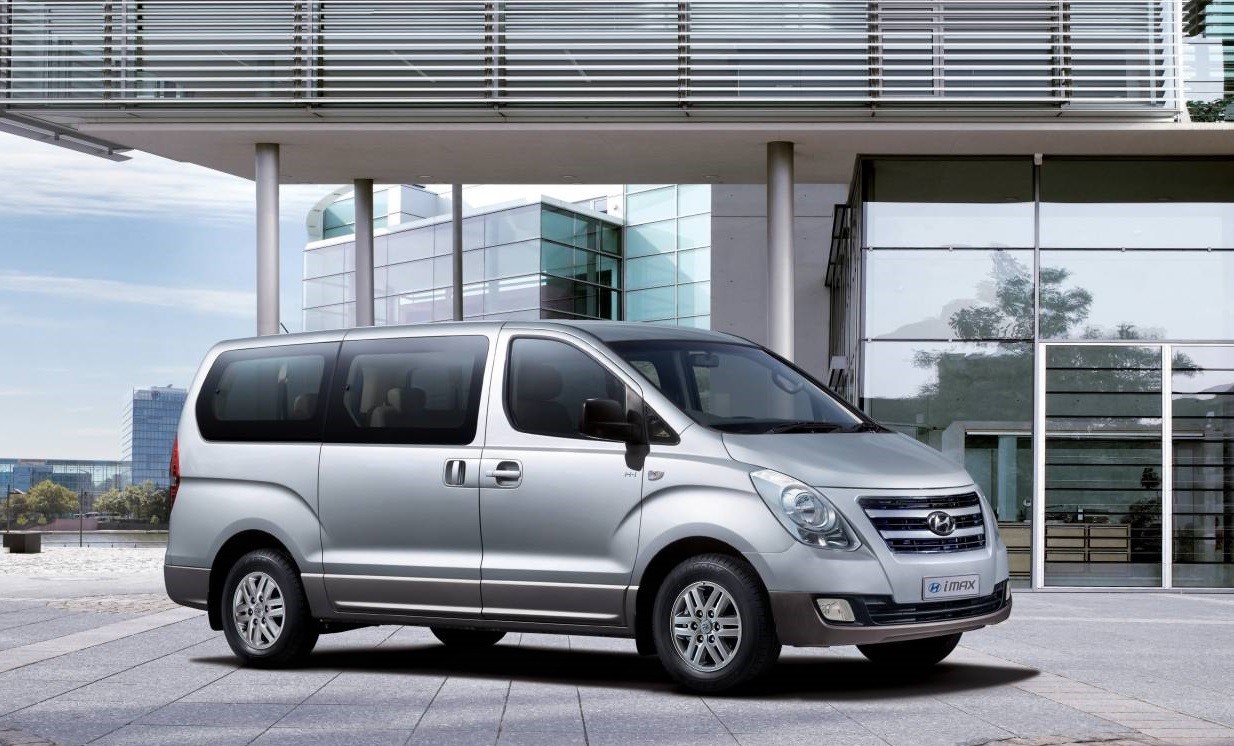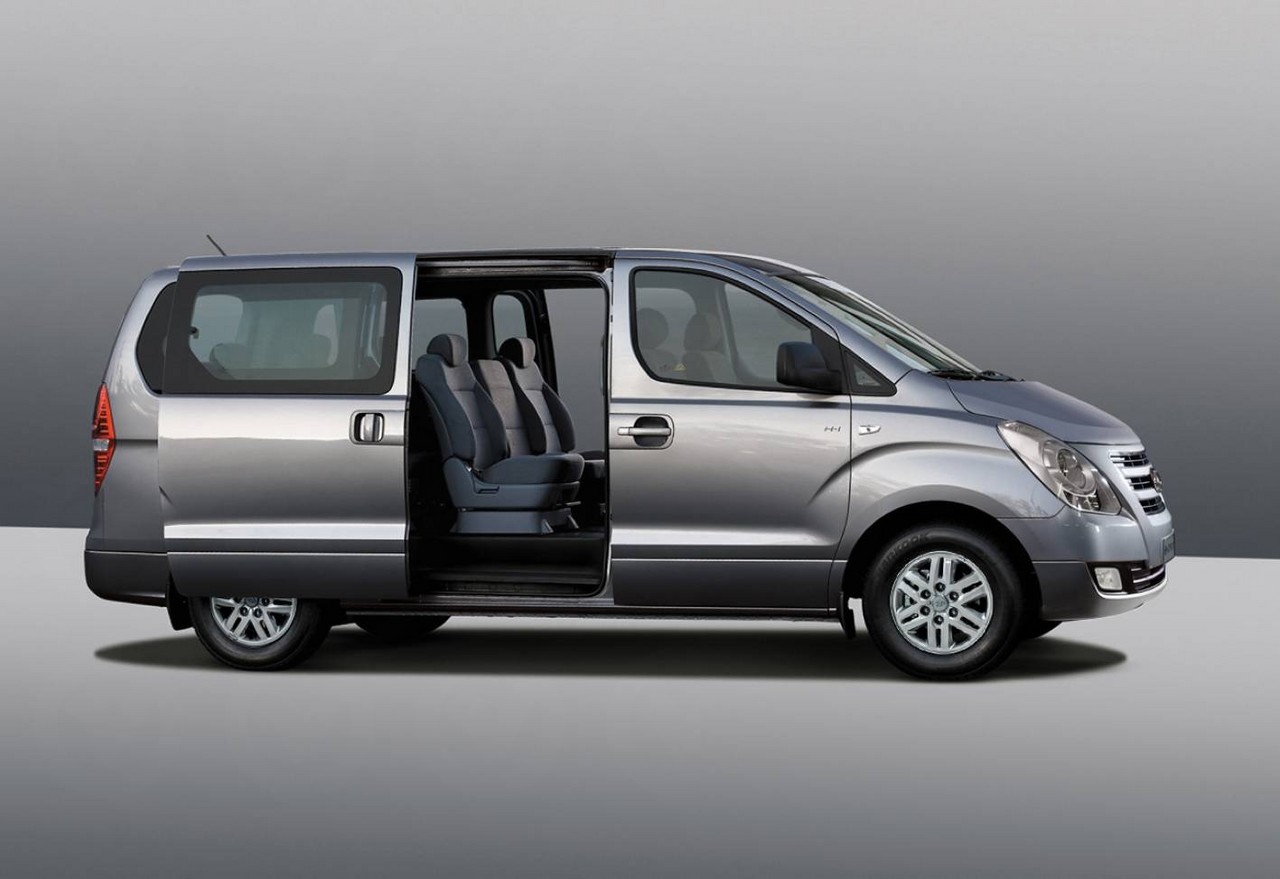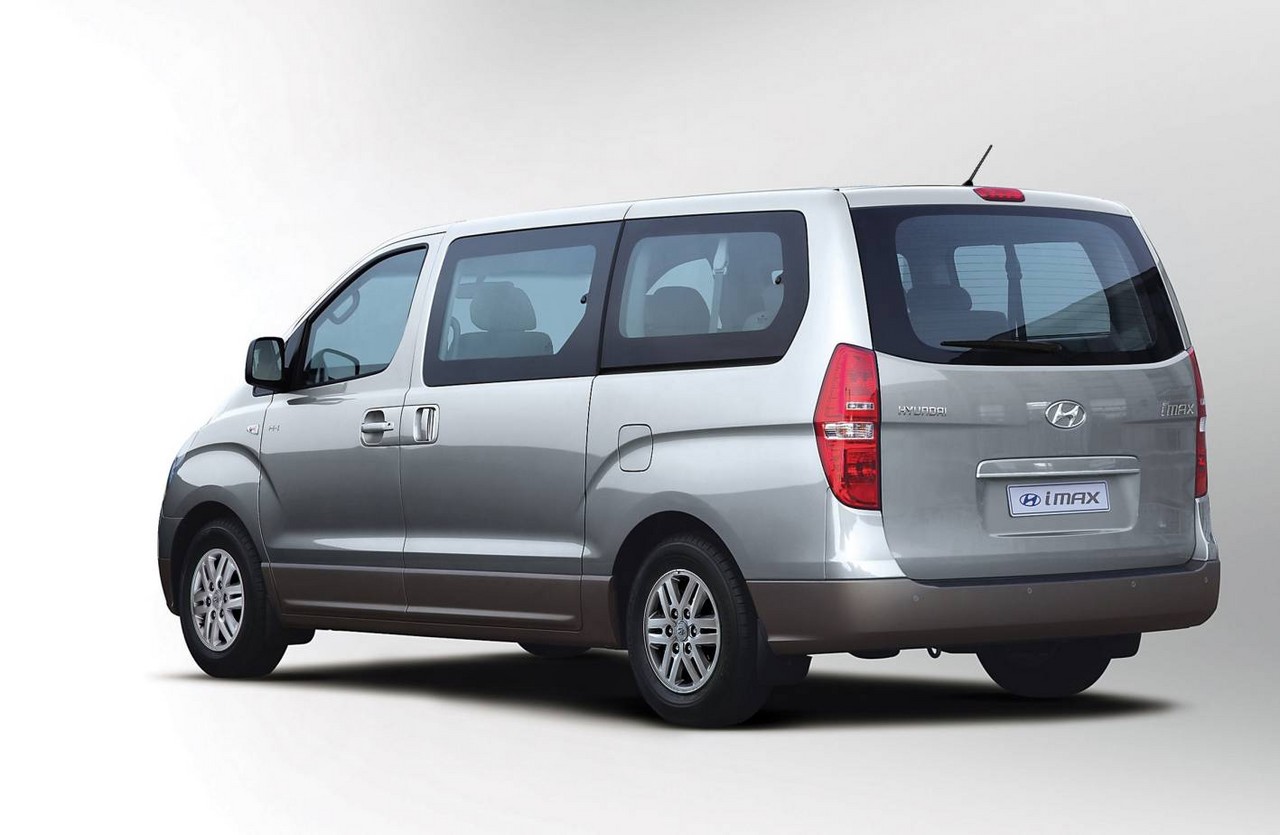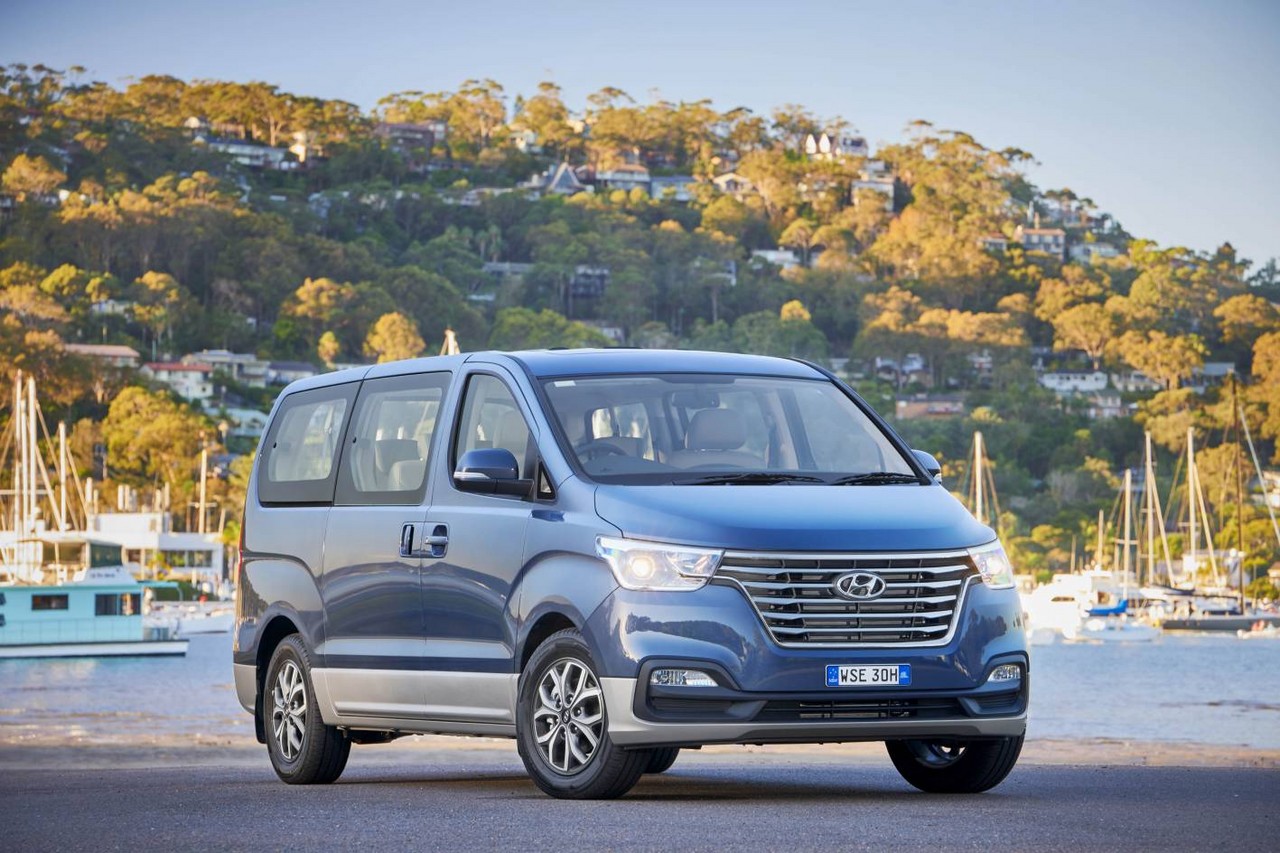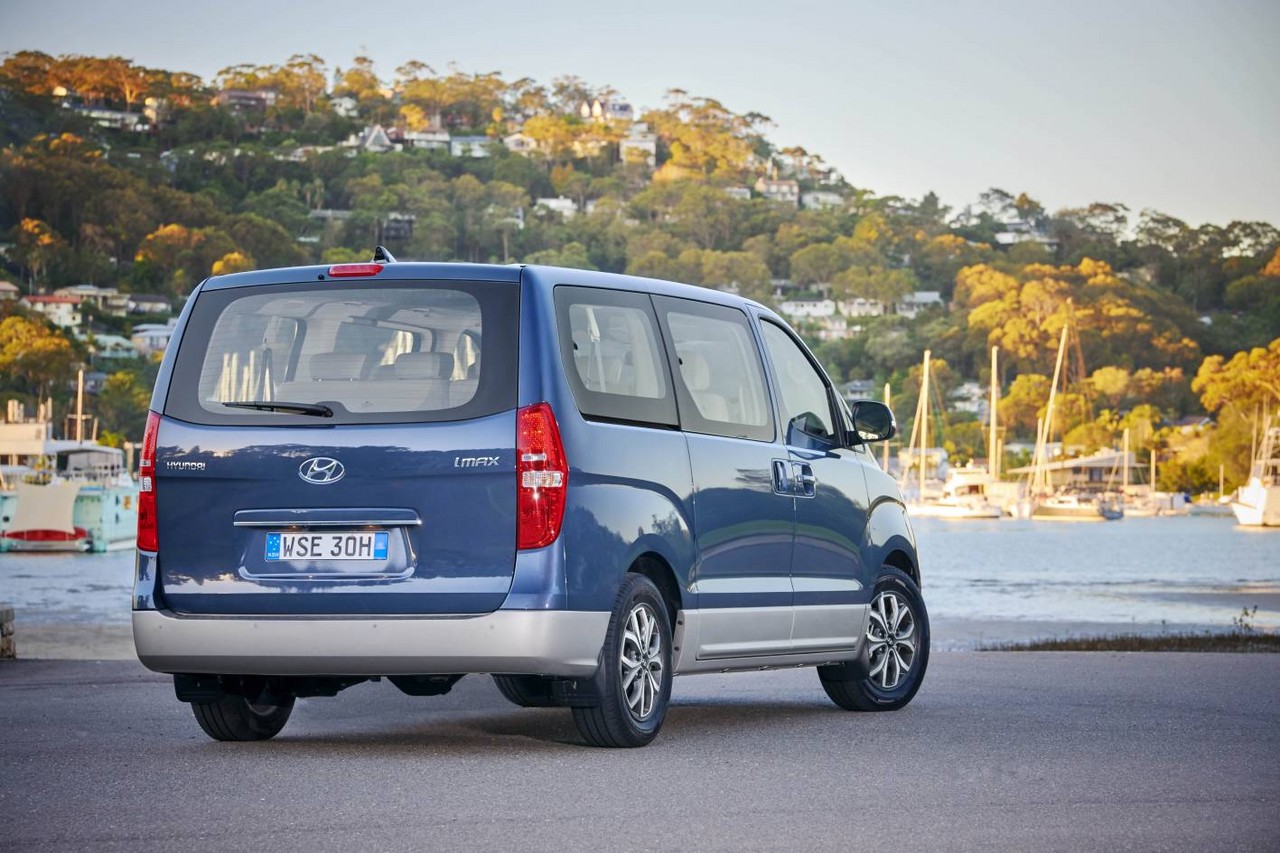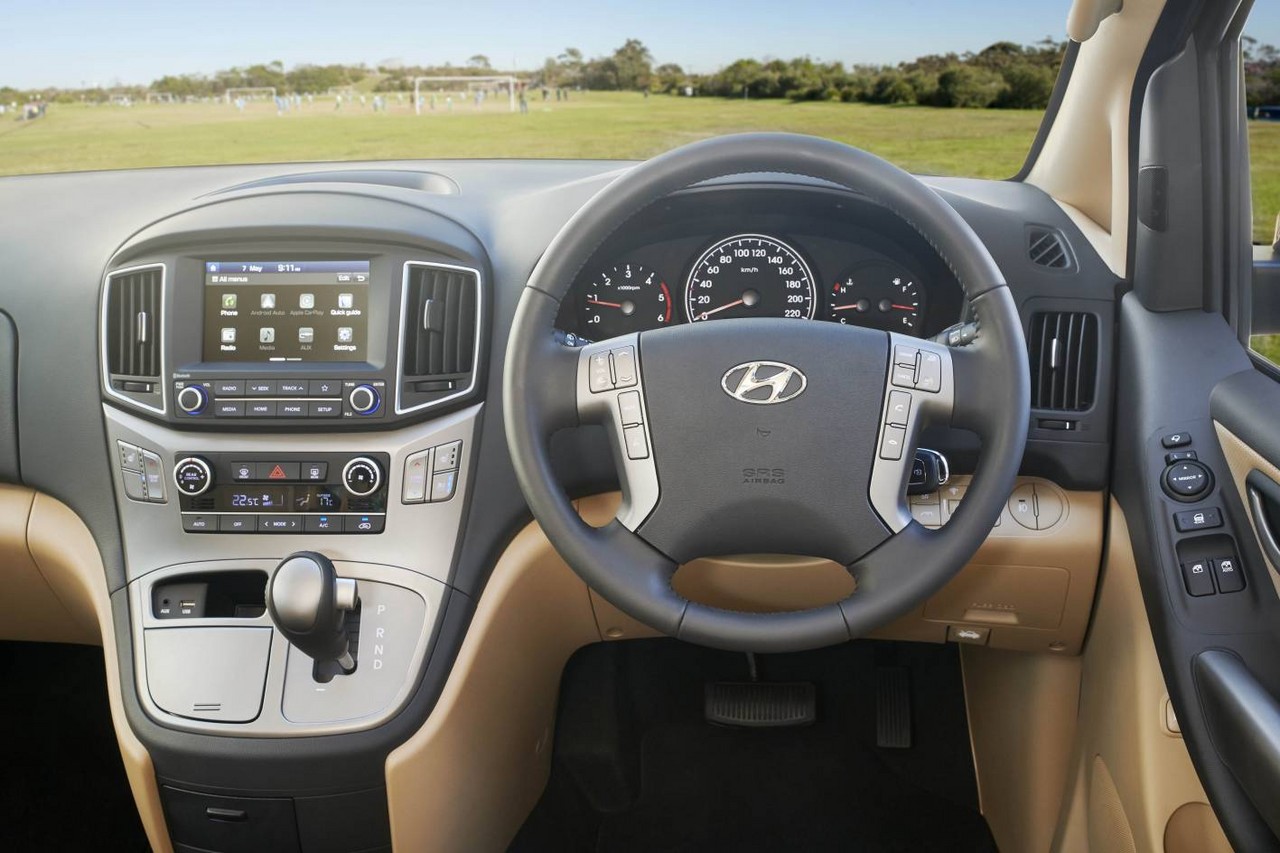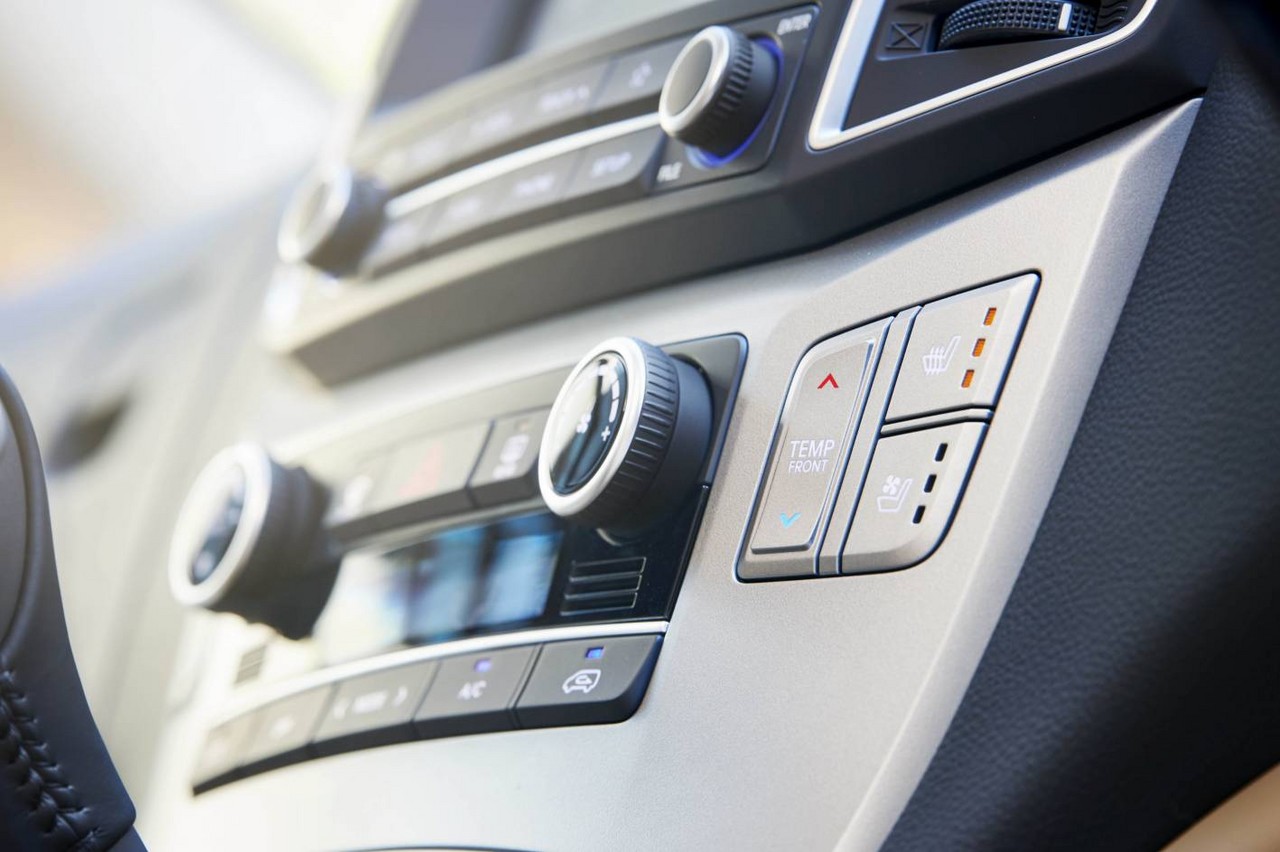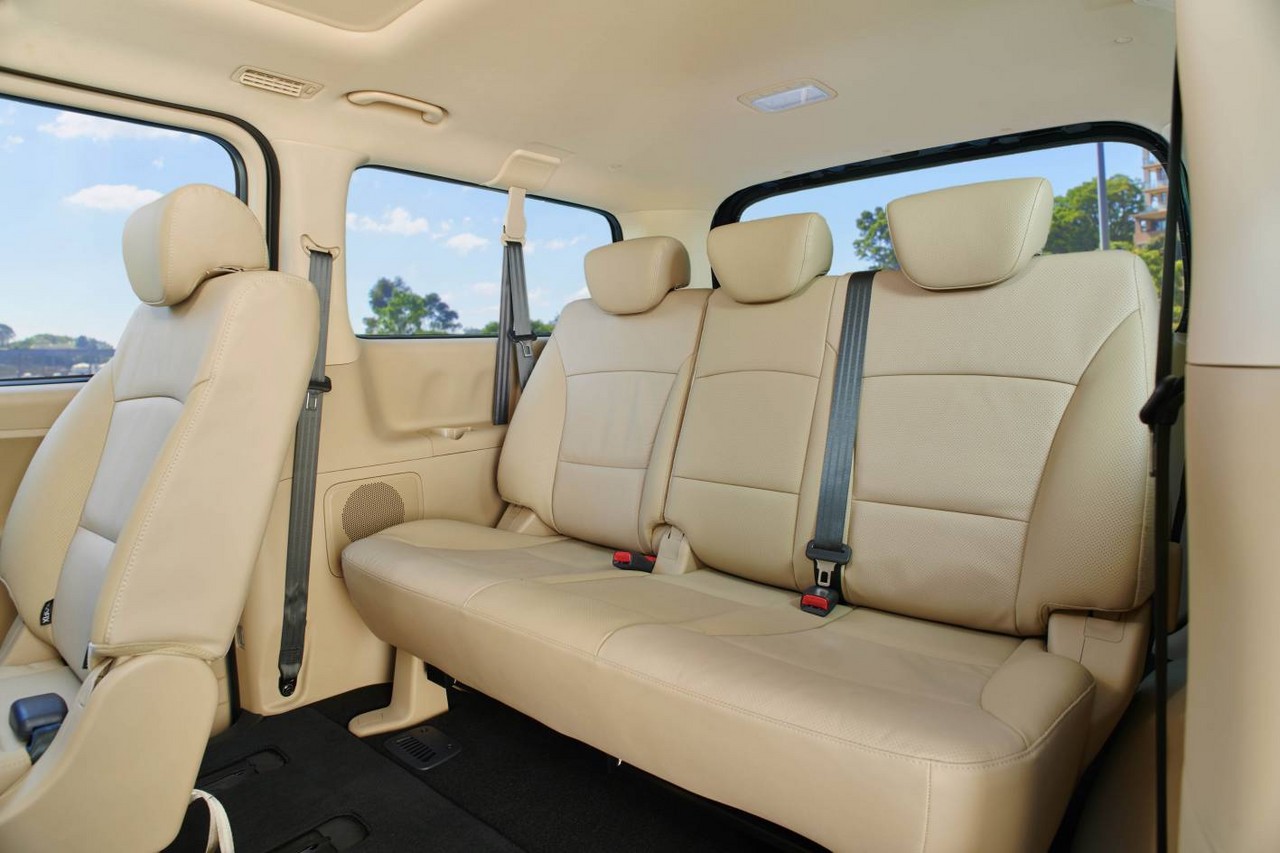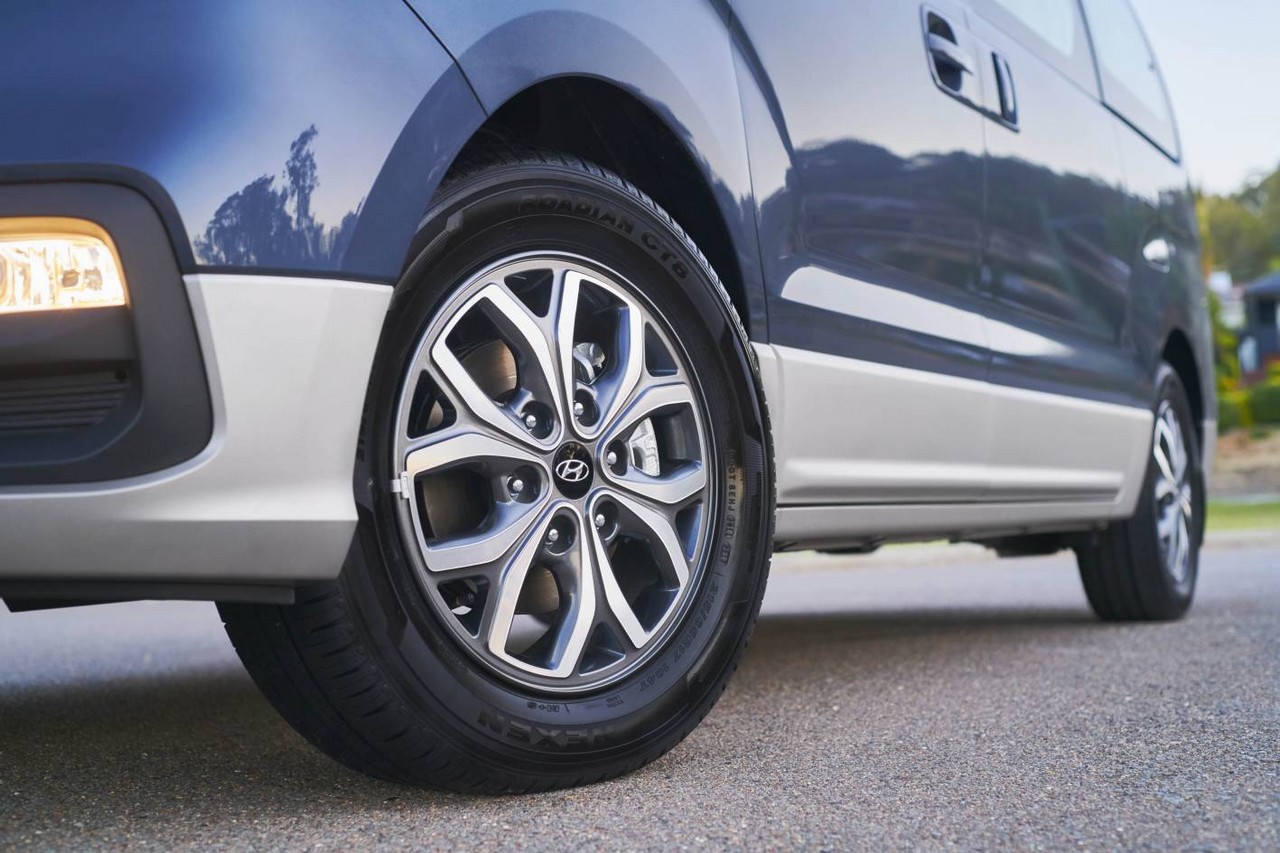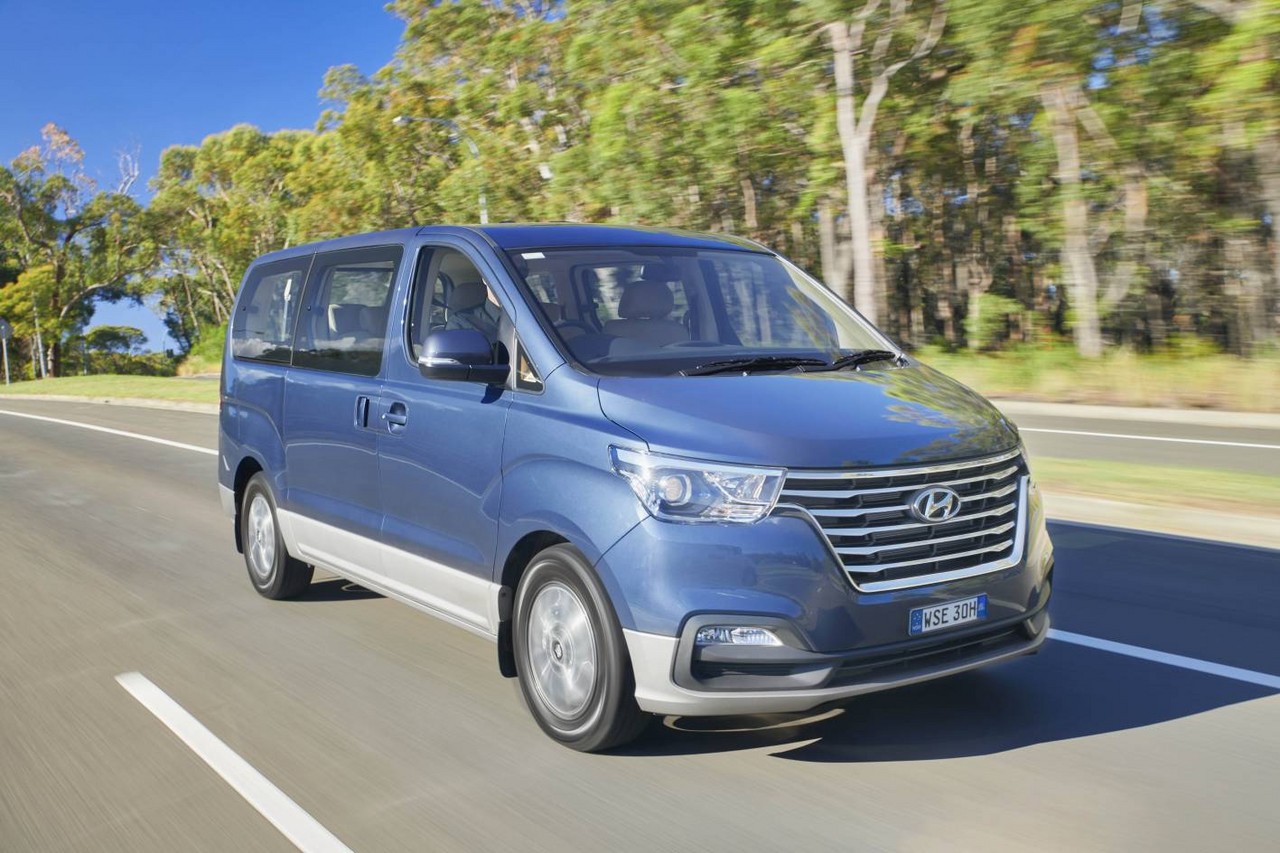
- Responsive turbo-diesel engines
- Comfortable ride
- Spacious interior
- Practicality of twin sliding doors
- Petrol engine struggles when loaded
- No reversing camera
- No side or curtain airbags
- Cabin lacks sound insulation
- Suspension lacks body control
- Wide-opening tailgate
Review: Hyundai TQ-W.I iMax (2008-15)
Overview
Released in February 2008, the Hyundai TQ-W Series I (TQ-W.I) iMax was an eight-seat people mover. Manufactured in Ulsan, South Korea, the Hyundai TQ-W iMax was available with 2.4-litre petrol (2.4 CVVT) and 2.5-litre turbo-diesel (2.5 CRDi) engines.
G4KE petrol and D4CB diesel engines
Of the engines,
- The 2.4-litre G4KE ‘Theta II’ petrol engine had an aluminium cylinder block and head, double overhead camshaft, four valves per cylinder, variable intake valve timing (CVVT) and a compression ratio of 10.5:1; and,
- Initially, the 2.5-litre D4CB ‘A’ diesel engine had a cast iron block, aluminium cylinder head, common-rail injection, a Borg Warner BV43 variable geometry turbocharger, double overhead camshafts and four valves per cylinder.
In August 2012, a more fuel-efficient 2.5-litre turbo-diesel engine was introduced and available with a six-speed manual transmission. For models with manual transmissions, however, the engine had a conventional waste-gate turbocharger rather than the variable geometry turbocharger that was used for engines mated with automatic transmissions.
| Variant | Engine | Years | Trans. | Peak power | Peak torque |
|---|---|---|---|---|---|
| 2.4 CVVT | 2.4-litre petrol I4 | 2008-16 | 4sp auto | 129 kW at 6000 rpm | 228 Nm at 4200 rpm |
| 2.5 CRDi VGT | 2.5-litre turbo-diesel I4 | 2008-12 | 5sp man., 5sp auto |
125 kW at 3800 rpm | 392 Nm at 2000-2500 rpm |
| 2012-16 | 5sp auto | 125 kW at 3800 rpm | 441 Nm at 2000-2250 rpm | ||
| 2.5 CRDi | 2.5-litre turbo-diesel I4 | 2012-16 | 6sp man. | 100 kW at 3800 rpm | 343 Nm at 1500-2500 rpm |
Dimensions and suspension
The Hyundai iMax was 5125 mm long, 1920 mm wide, 1925 mm tall and had a 3200 mm long wheelbase. Furthermore, the iLoad had MacPherson strut front suspension and a live rear axle with leaf springs.
Safety equipment
Initially, safety equipment for the Hyundai iMax included dual front airbags, ABS, electronic brake force distribution, front seatbelts with pretensioners and load limiters and lap-sash seatbelts for all eight seats; the 2.5 CRDi variants were also fitted with electronic stability and traction control.
From April 2011, the 2.4 CVVT was also fitted with electronic stability control and traction control as standard.
Crash testing
Hyundai iMax built after March 2009 had an improved structural design and, in KATRI crash testing – conducted under ANCAP supervision – the TQ-W iMax received a four star adult occupant protection rating with a score of 25.81 out of 37.
Features
Standard features for the Hyundai iMax included sixteen-inch alloy wheels, a six speaker sound system with CD player, dual zone climate control air conditioning, rear parking sensors, a tilt-adjustable steering wheel, sliding side doors and an immobiliser.
In April 2011, standard features were extended to include Bluetooth and iPod connectivity.
Brochures
- Brochure: Hyundai TQ-W iMax Shuttle (February 2010)
- Brochure: Hyundai TQ-W iMax (May 2012)
- Brochure: Hyundai TQ-W iMax (May 2014)
Related links
- Press release: Hyundai TQ-W iMax update (April 2011)
- Press release: Hyundai TQ-W iMax – improved fuel consumption (August 2012)
- Specifications: Hyundai TQ-W iMax (October 2012)
Review: Hyundai TQ-W.II iMax (2015-18)
Overview
Commencing production in September 2015, the Hyundai TQ-W Series II (TQ-W.II) iMax introduced additional safety equipment and features. The Hyundai TQ-W.II iMax could be identified by its deeper front grille with chrome surround, new front bumper, larger fog lights, chrome tailgate garnish, relocated radio aerial and alloy wheel designs. Inside, there was a redesigned centre stack with seven-inch touch screen, blue switchgear illumination, new instrument cluster design and a new ‘premium’ steering wheel and gearknob.
| Variant | Engine | Years | Trans. | Peak power | Peak torque |
|---|---|---|---|---|---|
| 2.4 CVVT | 2.4-litre petrol I4 | 2016 | 4sp auto | 127 kW at 6000 rpm | 224 Nm at 4200 rpm |
| 2.5 CRDi | 2.5-litre turbo-diesel I4 | 2016-18 | 6sp man. | 100 kW at 3800 rpm | 343 Nm at 1500-2500 rpm |
| 2.5 CRDi VGT | 2.5-litre turbo-diesel I4 | 2016-18 | 5sp auto | 125 kW at 3600 rpm | 441 Nm at 2000-2250 rpm |
Safety equipment
For the Hyundai TQ-W.II iMax, standard safety equipment was extended to include front seat-mounted side airbags.
Features
Standard features for the Hyundai TQ-W.II iMax were extended to include an infotainment system with a seven-inch touchscreen and connectivity options including Siri Eyes Free (iOS) and Google New (Android) voice activation. Voice activation was accessible via a button on the touchscreen audio unit and enabled the used to dictate commands for making phone calls, playing music, composing text messages, accessing calendar information and setting reminders.
Standard features were also extended to include power folding door mirrors. For iMax vehicles with a liftback rear door, a rear view camera was also fitted as standard; for iMax 2.5 CRDi VGT variants, cruise control was also made standard.
Brochure and specifications
- Brochure: Hyundai TQ-W iMax (May 2016)
- Brochure: Hyundai TQ-W iMax (December 2017)
- Specifications: Hyundai TQ-W iMax (July 2016)
Related links
Review: Hyundai TQ-W.III iMax (2018-on)
Overview
Released in May 2018, the Hyundai TQ-W Series III (TQ-W.III) iMax range consisted of Active and Elite editions and introduced additional features. Solely available with the 2.5 CRDi VGT engine, the Hyundai TQ-W.III iMax could be identified by its ‘flowing’ black bar grille with chrome lip surround, ‘enhanced’ projector beam headlights and new bumper with fog lamps. The grille for the iMax Elite, however, had chrome bars.
Inside, the Hyundai TQ-W.III iMax had a new instrument cluster with trip computer, an updated multimedia system which continued to have a seven-inch touchscreen (and was first introduced in the Hyundai OS Kona ), new cloth upholstery and tilt/telescopic adjustment for the steering wheel.
| Edition | Engine | Trans. | Peak power | Peak torque | |
|---|---|---|---|---|---|
| 2.5 CRDi VGT | Active, Elite |
2.5-litre turbo-diesel I4 | 5sp auto | 125 kW at 3600 rpm | 441 Nm at 2000-2250 rpm |
Features: Hyundai TQ-W.III iMax
Compared to the Hyundai TQ-W.II iMax, standard features for the TQ-W.III iMax were extended to include dusk-sensing headlights, power folding door mirrors with integrated indicators and tilt/telescopic steering wheel adjustment.
The Hyundai iMax Elite was further equipped with 17-inch alloy wheels, beige leather trim, ventilated driver’s seat, heated front seats, an electrochromatic rear view mirror, dual sunroofs and a two-tone dashboard.
For a complete list of features, please refer to the ‘Specifications’ document, below.
Related links
Related links
